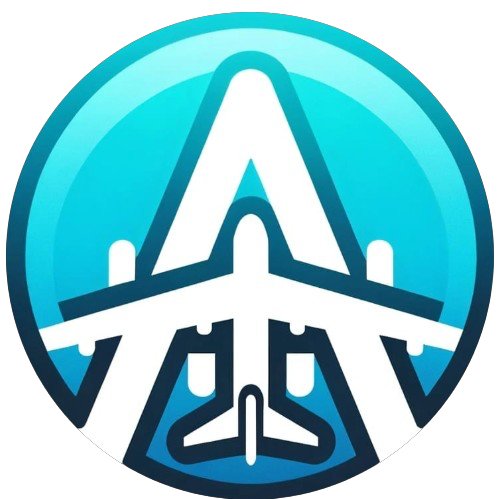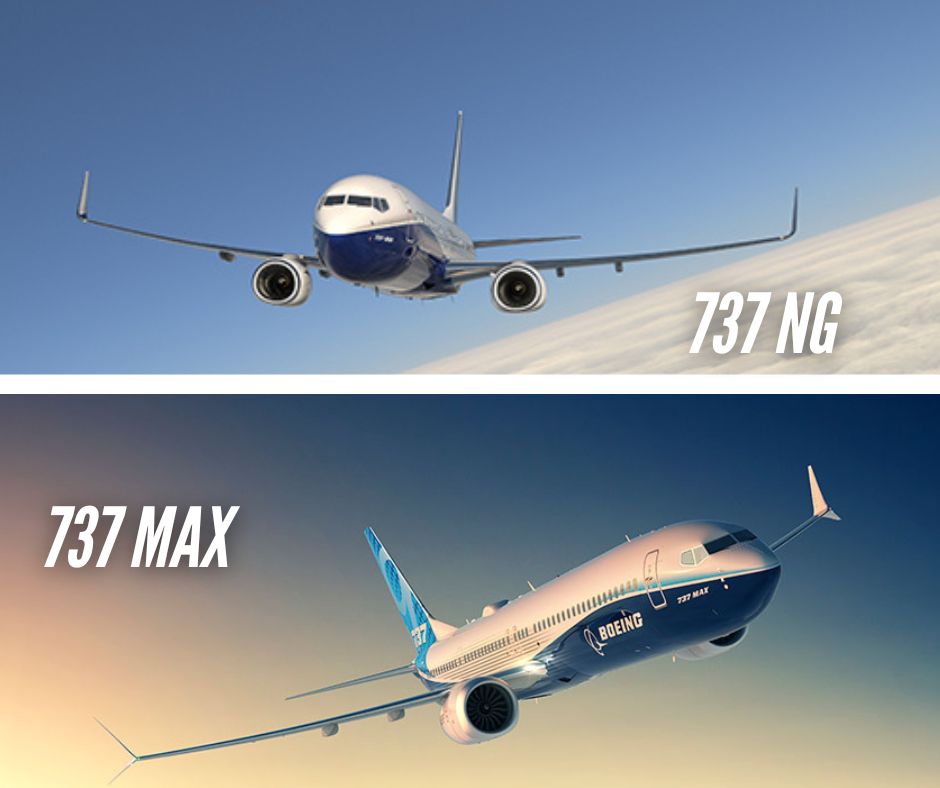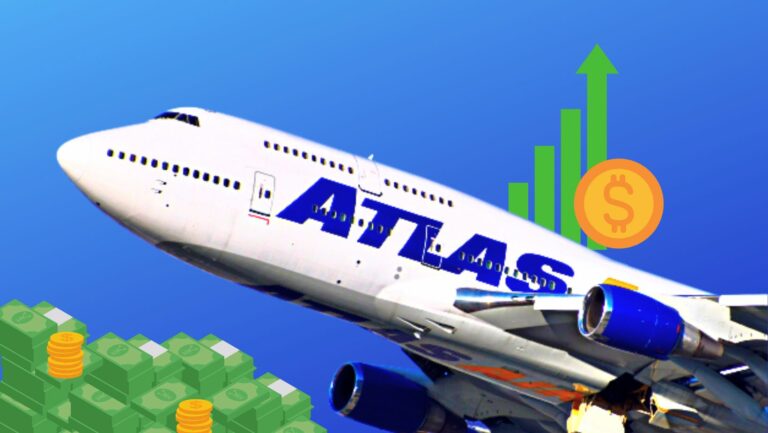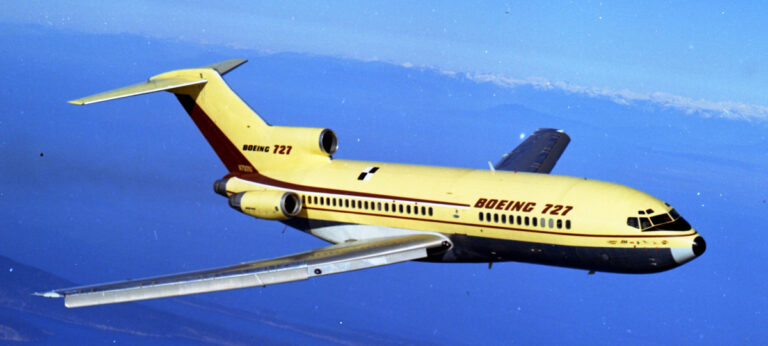What are the differences Between Boeing 737 NG and 737 MAX?
Boeing 737 is one of the most popular commercial aircraft in the world, with more than 10,000 units sold since its introduction in 1967. The latest versions of the aircraft are the 737 Next Generation (NG) and the 737 MAX, which are the most advanced and fuel-efficient variants of the 737 family. In this article, we will explore the differences between the Boeing 737 NG and MAX, and how they affect the aircraft’s performance, safety, and operation.
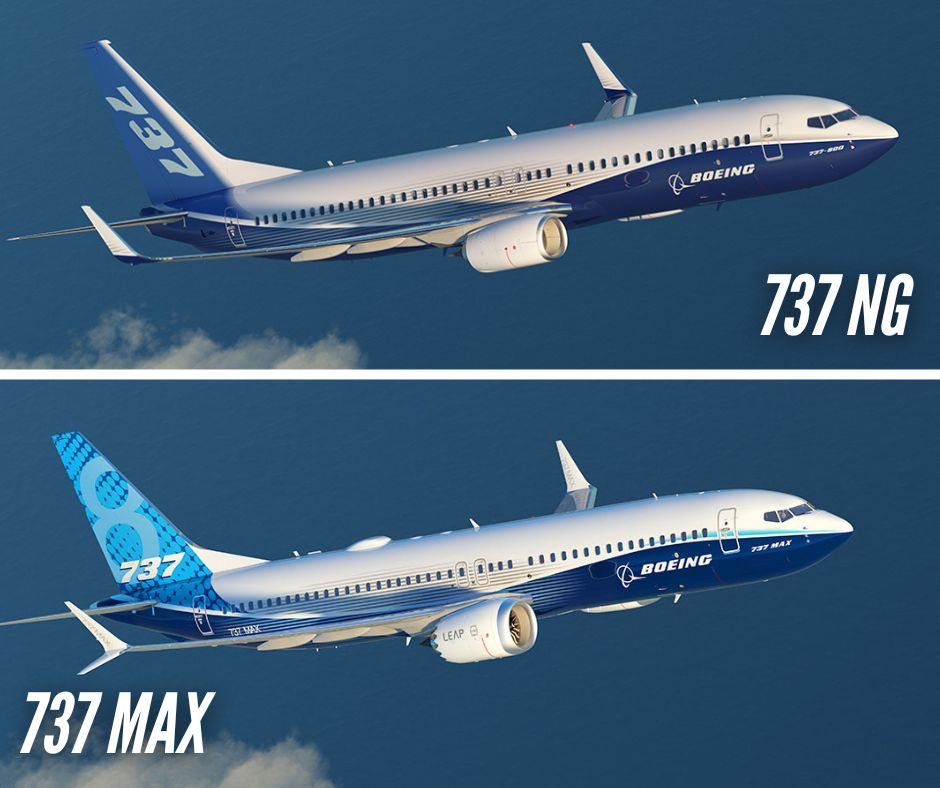
The Boeing 737 NG was introduced in 1997 and was a significant upgrade over the Classic series. It featured a larger wing, a greater fuel capacity, a longer range, and an increased maximum takeoff weight (MTOW). The series involved four variants of the same plane, the 600, 700, 800, and 900. The 737 NG quickly became a popular choice among airlines due to its improved fuel efficiency, reduced noise levels, and enhanced passenger comfort. On the other hand, the Boeing 737 MAX is the latest version of the 737 family, and it was designed to be even more fuel-efficient and technologically advanced than the NG.
Key Takeaways
- The Boeing 737 NG and MAX are the most advanced and fuel-efficient variants of the 737 family.
- The Boeing 737 NG was introduced in 1997 and was a significant upgrade over the Classic series.
- The Boeing 737 MAX is the latest version of the 737 family, and it was designed to be even more fuel-efficient and technologically advanced than the NG.
Historical Overview
Boeing 737 NG
The Boeing 737 Next Generation (NG) was introduced in 1997 as an upgrade to the Boeing 737 Classic series. The 737 NG features a redesigned wing, larger fuel capacity, and new engines. The new wing design improved fuel efficiency and increased the range of the aircraft. The 737 NG series is available in four variants, the 737-600, 737-700, 737-800, and 737-900. The 737-600 is the smallest variant and can seat up to 149 passengers, while the 737-900 is the largest variant and can seat up to 215 passengers. The 737 NG has been a popular choice for airlines due to its fuel efficiency, reliability, and low operating costs.
Boeing 737 MAX
The Boeing 737 MAX was introduced in 2011 as an upgrade to the Boeing 737 NG series. The 737 MAX features new engines, a redesigned wing, and advanced avionics. Featuring new engines, a redesigned wing, and advanced avionics, the 737 MAX boasts improved fuel efficiency and quieter operation compared to its predecessor. The redesigned wing not only enhances fuel efficiency but also extends the aircraft’s range. Available in four variants—737 MAX 7, 737 MAX 8, 737 MAX 9, and 737 MAX 10—the 737 MAX 8 stands out as the most popular, accommodating up to 210 passengers. Overall, the 737 MAX has been meticulously crafted to prioritize fuel efficiency and environmental sustainability over its predecessors.
In summary, the Boeing 737 NG and MAX series are both upgrades to the original Boeing 737. The 737 NG features a redesigned wing, larger fuel capacity, and new engines, while the 737 MAX features new engines, a redesigned wing, and advanced avionics. The 737 MAX has been designed to be more fuel-efficient and eco-friendly than the 737 NG.
Technical Differences between 737 MAX and 737 NG
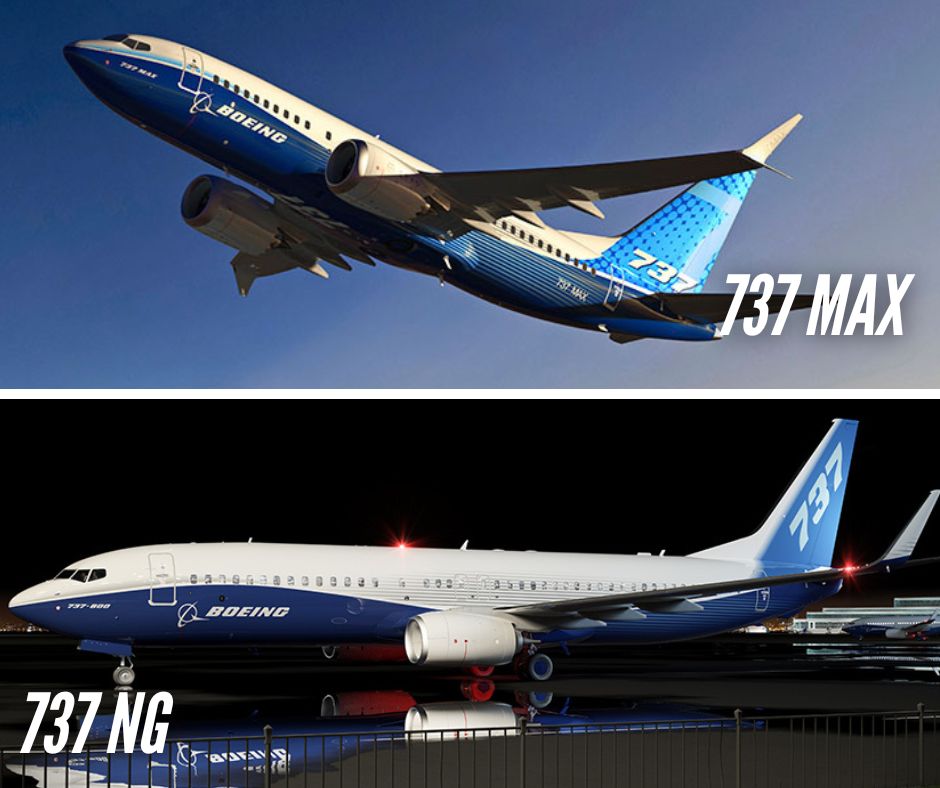
Engine Design
The Boeing 737 NG and MAX differ in their engine design. The 737 NG uses CFM56 engines, while the 737 MAX uses LEAP-1B engines. The LEAP-1B engines have a larger fan diameter and a higher bypass ratio than the CFM56 engines. This results in improved fuel efficiency and lower emissions. Additionally, the LEAP-1B engines have a redesigned nacelle, which reduces drag and improves aerodynamics.
Flight Control System
The flight control system is another area where the 737 NG and MAX differ. The 737 NG uses a hydraulic system to control the flight surfaces, while the 737 MAX uses an electronic system. This electronic system is called the Maneuvering Characteristics Augmentation System (MCAS). The MCAS is designed to automatically adjust the horizontal stabilizer to prevent the aircraft from stalling. However, it has been the subject of controversy due to its involvement in two fatal accidents.
Aerodynamics
The aerodynamics of the 737 NG and MAX have been improved in several ways. The 737 MAX has a redesigned tail cone and vertical stabilizer, which reduces drag and improves stability. Additionally, the 737 MAX has larger winglets, which improve fuel efficiency and reduce noise. The 737 MAX also has a modified wing, which increases lift and reduces drag. These aerodynamic improvements allow the 737 MAX to fly farther and faster than the 737 NG while using less fuel.
In summary, the Boeing 737 NG and MAX differ in their engine design, flight control system, and aerodynamics. The 737 MAX has several improvements over the 737 NG, including more fuel-efficient engines, an electronic flight control system, and improved aerodynamics.
Operational Differences

Fuel Efficiency
The Boeing 737 MAX was designed to be more fuel-efficient than the NG. According to Boeing, the MAX’s CFM LEAP-1B engines are 15% more fuel-efficient than the CFM56-7B engines used on the NG. This increased efficiency is due to a combination of factors, including the new engine design and improved aerodynamics.
Range
The MAX has a longer range than the NG, which means it can fly farther without refueling. According to Boeing, the MAX 8 has a range of 3,550 nautical miles, while the NG’s range is 3,060 nautical miles. This increased range is due to a combination of factors, including the increased fuel efficiency and the use of advanced materials in the construction of the aircraft.
Overall, the operational differences between the Boeing 737 NG and MAX are significant. The MAX is more fuel-efficient and has a longer range than the NG, which makes it a more attractive option for airlines looking to reduce their operating costs and increase their profitability. However, it is important to note that these differences are not the only factors that airlines consider when choosing between the two aircraft. Other factors, such as maintenance costs, availability of spare parts, and passenger comfort, also play a role in the decision-making process.
Safety Records
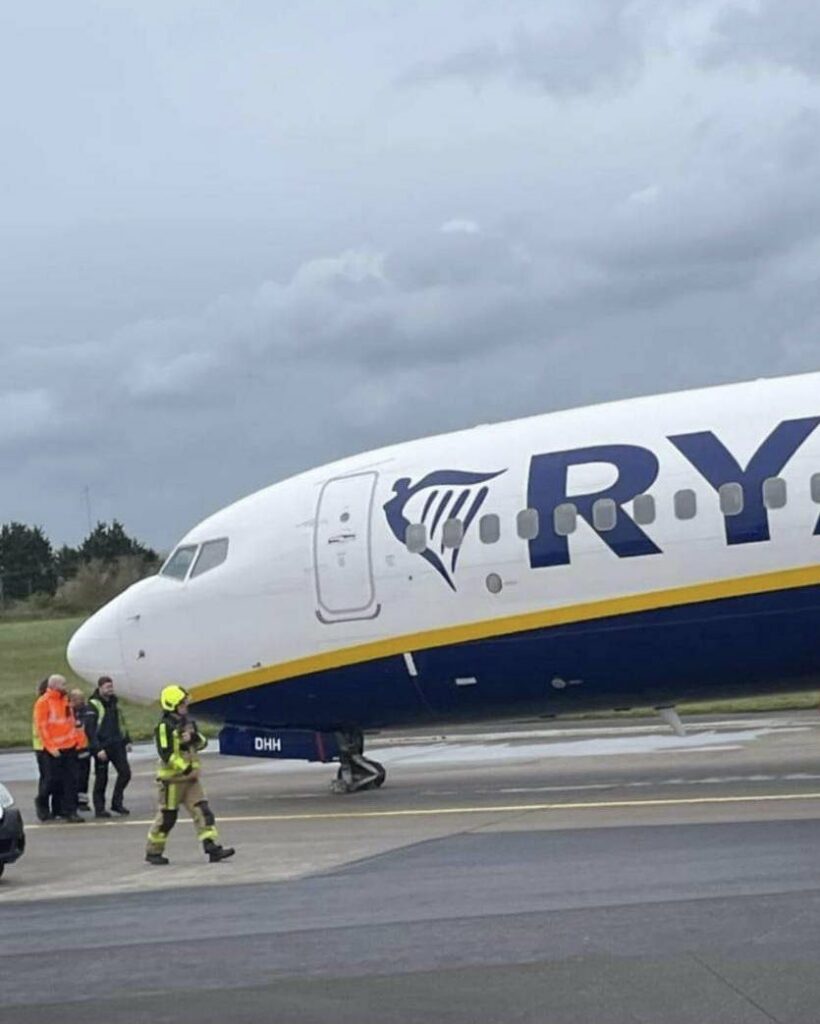
Boeing 737 NG Safety
The Boeing 737 NG has a good safety record. According to the Aviation Safety Network, there have been 174 accidents involving the 737 NG, resulting in 3,170 fatalities. However, it is important to note that most of these accidents were due to pilot error, weather conditions, or other external factors, rather than issues with the aircraft itself.
Boeing has also implemented several safety improvements in the 737 NG over the years, including enhanced avionics and flight control systems, as well as improved maintenance procedures. These improvements have helped to reduce the risk of accidents and improve overall safety.
Boeing 737 MAX Safety
The Boeing 737 MAX has had a controversial safety record. In October 2018, a 737 MAX operated by Lion Air crashed in Indonesia, killing all 189 people on board. Then, in March 2019, another 737 MAX operated by Ethiopian Airlines crashed, killing all 157 people on board. These crashes were attributed to a faulty flight control system known as the Maneuvering Characteristics Augmentation System (MCAS).
As a result of these accidents, the 737 MAX was grounded worldwide for over a year while Boeing worked to fix the MCAS and other issues. The aircraft has since been recertified by aviation authorities around the world, and Boeing has implemented several safety improvements, including additional sensors and software updates to the MCAS.
Overall, while the 737 NG has a good safety record, the 737 MAX has had some significant safety issues that have been addressed through extensive testing and safety improvements.
Frequently Asked Questions
The winglets on the Boeing 737 NG and MAX are different in shape and size. The NG’s winglets are smaller and angled upwards, while the MAX’s winglets are larger and angled both upwards and downwards. The MAX’s winglets are designed to improve fuel efficiency and increase range.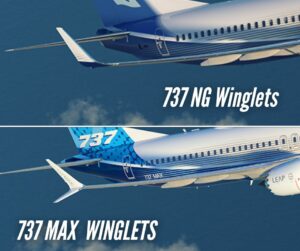
The Boeing 737 NG and MAX have different engine types. The NG is powered by CFM56 engines, while the MAX is powered by LEAP-1B engines. The LEAP-1B engines are more fuel efficient and emit less noise compared to the CFM56 engines.
The cockpit technology on the Boeing 737 MAX is more advanced compared to the NG. The MAX has a larger flight display screen, a new digital flight control system, and a new flight deck design. The MAX also has an advanced warning system that alerts pilots to potential safety hazards.
The seating capacity of the Boeing 737 MAX is similar to the NG. Both aircraft can seat up to 230 passengers, depending on the configuration.
The Boeing 737 MAX has a longer range compared to the NG. The MAX’s range is estimated to be around 3,550 nautical miles, while the NG’s range is estimated to be around 3,060 nautical miles. The MAX’s longer range is due to its more fuel-efficient engines and larger winglets.
